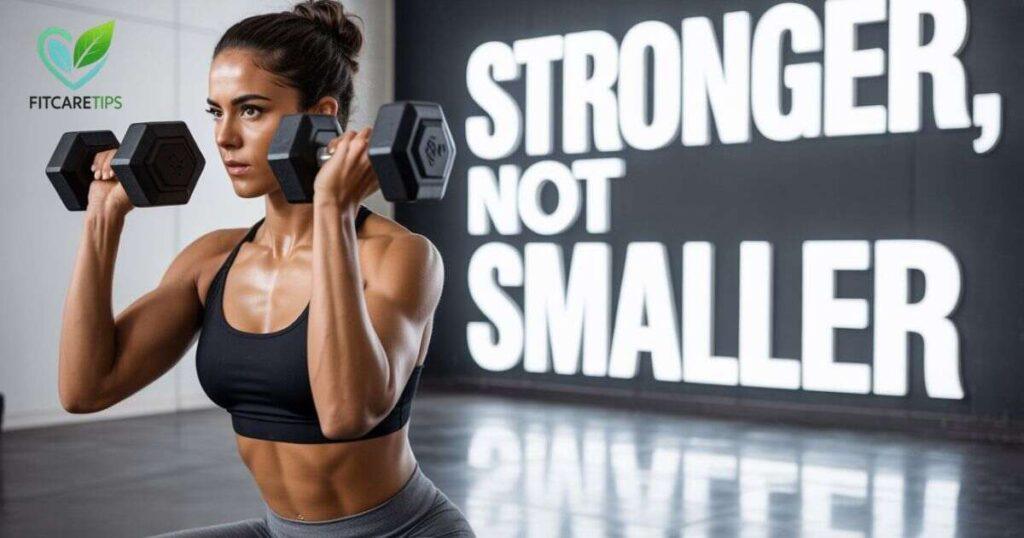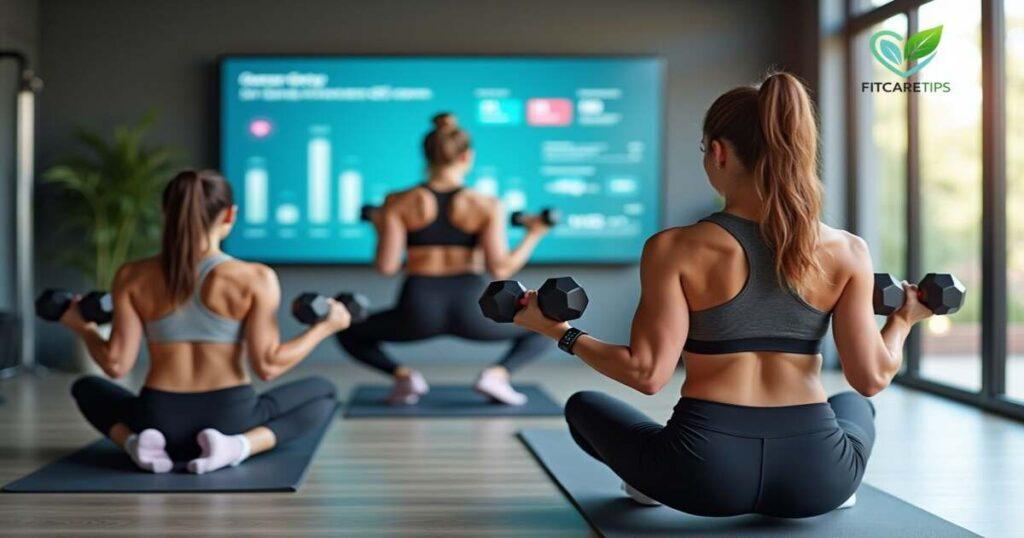Fitness isn’t a one-size-fits-all solution—especially for women. Hormonal changes, muscle structure, and recovery requirements make women’s fitness distinct. Unlike men, women gain more from tactical strength training and cycle-matched workouts that maximize energy and outcomes.
Whether it’s weight-lifting, yoga, or conquering cardio, training like a woman means working with your body, not against it. It increases metabolic efficiency, avoids injury, and develops long-term strength. Ditch old myths—modern science confirms that women excel with intelligent, tailored fitness regimens. Ready to revamp your routine? Let’s get into the top methods for training for your body, goals, and lifestyle.

Why Women Get More Benefits from Exercise Than Men
Women tend to experience more health benefits from exercise than men. Research indicates women lower heart disease risk by 24% through regular exercise, while men experience only a 15% reduction. This is because estrogen enables women to burn fat more effectively during exercise. Estrogen also spares muscle during restoration.
Another important advantage is stress relief. Women secrete more oxytocin, a hormone that assists in reducing stress. This implies that exercises can reduce anxiety quicker in women than in men. But women must train differently—training in hormone-friendly exercises for maximum benefits.
The Essentials of Women’s Fitness for a Healthy Life
Women’s fitness is not only weight loss. It’s about energy, strength, and feeling great. The most effective formula includes strength training, cardio, and flexibility exercises. Strength training prevents bone loss, particularly valuable as women get older. Cardio makes the heart strong, and injury prevention comes from flexibility exercises.
One of the biggest mistakes women make is bypassing recovery. Women’s bodies require more time to rest between challenging workouts. Incorporating yoga or light walks on rest days aids in healing muscles. Furthermore, consuming adequate protein (at least 1.6g per kg of body weight) aids faster muscle recovery.
Stronger, Not Smaller: The New Way of Women’s Fitness Training
The days of simply doing cardio to be skinny are over. Now, strength training is the right way forward. Weightlifting doesn’t make women muscular—it makes them healthier and stronger. Research shows women who lift weights have improved bone density and a more efficient metabolism.

The Most Popular Workouts in Women’s Fitness Today
Today’s top training methods for women blend science with practicality, delivering results while respecting female physiology. Hybrid training leads the pack by combining strength and cardio in efficient, time-saving sessions. This approach, often structured in circuit formats, keeps heart rates elevated while building lean muscle perfect for busy women seeking maximum results in minimal time. Studies show that hybrid workouts boost metabolism for up to 48 hours after exercise and improve cardiovascular health markers by 27% compared to traditional split routines.
Pilates remains a cornerstone for developing core stability and postural alignment. Unlike conventional ab workouts, Pilates emphasizes deep core activation through controlled movements that simultaneously strengthen and lengthen muscles. Recent research from the Journal of Sports Science highlights its effectiveness for reducing chronic back pain (by 42% in participants) and improving functional movement patterns—benefits particularly valuable for women who sit for work or experience pregnancy-related postural changes. For women at all life stages, pelvic floor training has emerged as non-negotiable. Beyond basic Kegels, modern protocols incorporate:
- Hypopressive breathing techniques to reduce intra-abdominal pressure
- Functional movement integration (squats with pelvic floor engagement)
- Progressive overload using biofeedback devices
These methods prove especially transformative for postpartum recovery (reducing prolapse symptoms by 65%) and menopausal women combating bladder weakness. What makes these workouts particularly effective is their adaptability—they can be modified for any fitness level while delivering measurable improvements in both physical performance and daily life quality. The common thread? Each method honors how women’s bodies actually work, delivering strength without sacrificing femininity, and results without risking injury—the hallmark of truly intelligent female-focused training.
How Technology Assists Women to Remain Fit
Technology plays a powerful role in helping women stay fit, healthy, and motivated. Fitness trackers like Whoop are popular tools that monitor key health indicators such as sleep quality, recovery, heart rate, and activity levels. These devices give women real-time feedback on their physical state, helping them make informed decisions about rest and exercise.
In addition, AI-powered fitness apps like Freeletics offer personalized workout plans based on a user’s goals, fitness level, and available time. These smart apps adjust routines as users progress, making workouts more effective and easier to stick with. Together, these technologies support women in building healthier habits and maintaining consistent fitness routines in their daily lives.

7 Nutrition Facts Every Active Woman Should Know
For active women, good nutrition isn’t just about staying slim — it’s about fueling performance, boosting recovery, and staying strong. Here are seven key facts that every fitness-focused woman should keep in mind:
- Carbs Are Not the Enemy – Eating carbohydrates before a workout helps fuel the body and boosts energy, especially for endurance or high-intensity training.
- Iron Is a Must – Many active women don’t get enough iron, which can lead to tiredness and poor performance. Foods like spinach, red meat, and lentils help meet iron needs.
- Magnesium Eases Cramps – This mineral supports muscle function and is often more helpful than stretching alone for relieving painful cramps.
To support an active lifestyle, here’s a simple, balanced nutrition plan:
- Breakfast: Eggs + avocado + whole-grain toast
- Lunch: Grilled chicken + quinoa + veggies
- Snack: Greek yogurt + berries
- Dinner: Salmon + sweet potato + greens
By following these basic tips and meal ideas, women can stay energized, recover better, and reach their fitness goals with greater ease.
Recovery Tips: What Really Works
Recovery is just as important as the workout itself—especially for women, whose muscles often take a bit longer to heal. Taking the time to recover properly can help prevent injuries, reduce fatigue, and improve performance over time. Here’s what truly helps:
- Sleep 7–9 Hours: Quality sleep is the body’s natural repair system. During deep sleep, muscles rebuild and energy is restored.
- Epsom Salt Baths: A warm soak with Epsom salts can ease sore muscles, reduce inflammation, and promote relaxation.
- Light Walks on Rest Days: Gentle movement helps keep the blood flowing without putting stress on the muscles, speeding up recovery without overdoing it.
Incorporating these simple habits into a weekly routine can make a big difference in how the body bounces back—and gets ready for the next challenge.
Warning Signs of Overtraining in Women’s Fitness
In Women’s Fitness, women are particularly susceptible to overtraining due to hormonal influences on recovery. Beyond general fatigue, female-specific red flags include:
- Persistent Exhaustion: Waking up drained despite adequate sleep indicates your nervous system is overloaded. This is one of the most overlooked issues in Women’s Fitness routines. Cortisol levels may remain elevated for 48+ hours post-workout.
- Non-Resolving Muscle Soreness: In Women’s Fitness training, when DOMS lasts beyond 72 hours, it signals failed recovery. Women experience 20% slower muscle repair than men post-intense training.
- Menstrual Disruptions: Missed periods or abnormal cycles reflect hypothalamic-pituitary suppression. Such menstrual disruptions are a clear red flag often seen in Women’s Fitness programs that lack recovery days. Just 3 days of intense training without recovery can lower estrogen by 40%.
- Performance Plateaus/Declines: Unexpected strength drops or inability to complete usual workouts reveal accumulated fatigue. These performance plateaus are common in Women’s Fitness when training intensity exceeds recovery capacity.
- Mood Disturbances: Irritability, anxiety or depression often precede physical symptoms due to progesterone depletion. Addressing mental well-being is just as important as physical progress in Women’s Fitness.

Action Steps:
- Take 3–5 full rest days
- Reduce training volume by 50% for 2 weeks
- Prioritize 8+ hours of quality sleep
- Increase protein intake to 2g per kg body weight
- Consider salivary hormone testing if symptoms persist
Women’s bodies give clear warnings when pushed beyond recoverable limits. Heeding these signals prevents long-term endocrine dysfunction and maximizes fitness progress. Tracking menstrual cycles alongside workout performance provides the most accurate recovery insights.
The Best Workouts for Every Age
| AGE GROUP | BEST WORKOUTS | WHY IT MATTERS |
| 20s – 30s | Heavy lifting, HIIT | Builds bone density |
| 40s – 60s | Strength & yoga | Prevents loss of muscle |
| 60s & above | Walking, Tai Chi | Prevents falls |
Mental Health and Fitness: The Connection
Exercise isn’t just physical—it’s mental, too. Women who exercise on a regular basis report less stress and better mood. Simple practices, such as deep breathing before exercise, can have a significant impact.
Easy Stress-Busting Tips
- 5-Minute Meditation: Calms the mind.
- Walking Outside: Reduces anxiety.
- Group Fitness Classes: Boosts motivation.
Final Thoughts: Small Steps, Big Results
Women’s fitness is all about progress, not perfection. Begin with gradual changes—add strength training two times a week, consume additional protein, and sleep better. Gradually, these routines create more energy, strength, and confidence. With FitCareTips, you can become the strongest version of yourself. Balancing training, nutrition, and recovery is the true foundation of sustainable Women’s Fitness.
FAQS
Here are some of the most common questions about Women’s Fitness:
Q1. What does “Train Like a Woman” mean?
It refers to fitness programs geared to female physiology – considering hormones, metabolism and need for recovery. Women gain most benefit from strength training, cycle-synced exercise and adequate rest.
Q2. How often can women lift weights?
3-4 times a week is optimal. Give 48 hours’ rest between targeting the same muscles. Newbies begin with 2 full-body workouts, experienced individuals can do 4-5. Rest days are important.
Q3. What’s the best workout for women over 40?
Focus on:
- Strength training (prevents bone loss)
- Pelvic floor exercises
- Balance moves
- Low-impact cardio
- Proper warm ups
Q4. Do women need different nutrition than men?
Yes! Women need:
- More iron (18mg daily)
- Extra protein (1.6g/kg body weight)
- Cycle-aware carbohydrate timing
- Magnesium for cramps
Q5. Can women build muscle after menopause?
Yes. Strength training 3x per week and sufficient protein (1.2-1.6g/kg) preserves muscle. Prioritize progressive overload and recovery.

“Abdul Rehman Shahzad – WordPress expert, SEO article writer, and website content creator at FitCareTips.”
